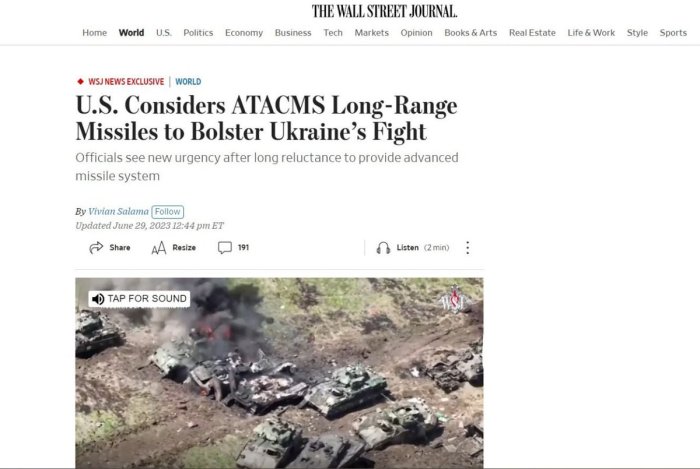US may send Ukraine medium-range missiles for F-16s, Politico reports, sparking a wave of speculation about the potential implications for the ongoing conflict. This development raises crucial questions about the strategic impact of these weapons, the role of F-16s in the conflict, and the potential reactions from Russia and the international community.
The potential provision of medium-range missiles to Ukraine could significantly alter the battlefield dynamics. These missiles could extend Ukraine’s reach, allowing them to target Russian military installations and logistics hubs further behind enemy lines. However, such a move could also escalate the conflict, potentially leading to a broader confrontation with Russia.
The introduction of F-16s would add another layer of complexity, providing Ukraine with advanced fighter jets capable of engaging in air-to-air combat and supporting ground troops. While F-16s could enhance Ukraine’s air defense capabilities, integrating them into the Ukrainian Air Force would require significant training and logistical support.
The Potential Impact of Medium-Range Missiles
Providing Ukraine with medium-range missiles would have significant strategic implications, potentially altering the course of the conflict. These missiles could significantly enhance Ukraine’s ability to strike targets deep within Russian-controlled territory, potentially disrupting supply lines, command centers, and key infrastructure.
This could significantly impact the battlefield dynamics, shifting the balance of power in favor of Ukraine.
The Range and Capabilities of Medium-Range Missiles
The range and capabilities of these missiles would be crucial in determining their impact on the conflict. Medium-range missiles, with ranges exceeding 100 kilometers, would allow Ukraine to strike targets far beyond the current front lines, potentially impacting Russian military operations and logistics.
These missiles could be equipped with various warheads, including conventional high-explosive, cluster munitions, and even precision-guided munitions, offering Ukraine a range of options for engaging targets.
Potential Risks and Benefits for Ukraine
Providing Ukraine with medium-range missiles could be a double-edged sword. On the one hand, it could significantly boost Ukraine’s defensive capabilities, enabling them to strike targets that were previously out of reach. This could potentially deter Russian aggression and help Ukraine regain control of lost territory.
However, on the other hand, it could escalate the conflict, potentially leading to a wider war involving NATO.
Potential Escalation of the Conflict
The provision of medium-range missiles could be perceived by Russia as a direct threat, leading to a significant escalation of the conflict. Russia might respond with more aggressive military actions, potentially targeting NATO countries, or even resorting to the use of nuclear weapons.
This would create a dangerous situation with the potential for a global conflict.
Strategic Implications for the Conflict
The strategic implications of providing Ukraine with medium-range missiles are complex and far-reaching. It could significantly alter the dynamics of the conflict, potentially leading to a decisive shift in favor of Ukraine. However, it could also lead to a dangerous escalation, potentially drawing NATO into the conflict and triggering a wider war.
The Role of F-16s in the Conflict
The potential deployment of F-16 fighter jets to Ukraine has sparked significant debate, with supporters arguing they could be a game-changer in the conflict, while opponents raise concerns about the complexity of integrating such advanced aircraft into the Ukrainian Air Force.
Understanding the capabilities of F-16s and their potential impact on the conflict requires examining their strengths, limitations, and the logistical challenges involved.The F-16 is a highly capable multirole fighter jet designed for air-to-air combat, air-to-ground strikes, and reconnaissance missions. It features advanced avionics, sophisticated radar systems, and a diverse arsenal of weapons, including air-to-air missiles, precision-guided bombs, and anti-ship missiles.
Capabilities of F-16 Fighter Jets
The F-16s’ capabilities could be crucial for Ukraine in several ways:* Air Superiority:The F-16’s superior speed, maneuverability, and armament could help Ukraine establish air superiority over contested airspace, allowing Ukrainian forces to operate more effectively and limiting Russian airpower.
Get the entire information you require about Drone strike causes explosions at facility in Krasnodar Krai, Russian officials say on this page.
Precision Strikes
The F-16’s advanced targeting systems and diverse weapons arsenal would enable Ukraine to conduct highly accurate strikes against Russian ground forces, logistics, and critical infrastructure, potentially disrupting Russian operations and logistics.
Defense Against Russian Air Attacks
The F-16’s sophisticated radar systems and air-to-air capabilities would enhance Ukraine’s ability to detect and intercept Russian aircraft, potentially reducing the effectiveness of Russian air strikes.
Reconnaissance and Intelligence Gathering
The F-16’s advanced sensors and reconnaissance capabilities could provide Ukraine with valuable real-time intelligence on Russian troop movements, equipment deployments, and battlefield positions, enabling more effective targeting and tactical planning.
Comparison with Existing Ukrainian Aircraft
While the Ukrainian Air Force currently operates a variety of aircraft, including MiG-29s and Su-27s, the F-16 offers several advantages:* Modern Technology:The F-16 is a significantly more modern aircraft than the MiG-29s and Su-27s currently in Ukrainian service, featuring more advanced avionics, weapons systems, and radar technology.
This would give Ukrainian pilots a significant technological advantage over their Russian counterparts.
Maintainability and Support
The F-16 has a proven track record of reliability and maintainability, which is crucial in a conflict zone. Its widespread use by NATO allies would also facilitate access to spare parts, technical support, and training.
Interoperability with NATO Allies
The F-16’s compatibility with NATO standards and procedures would make it easier for Ukraine to integrate with NATO allies and receive support.However, the F-16 also has some disadvantages compared to existing Ukrainian aircraft:* Training Requirements:Ukrainian pilots would require extensive training to operate the F-16 effectively, which could take months or even years to complete.
This could significantly delay the deployment of F-16s to the conflict zone.
Logistical Challenges
Integrating the F-16 into the Ukrainian Air Force would require significant logistical support, including maintenance facilities, spare parts, and specialized personnel. These logistical challenges could be significant, especially considering the ongoing conflict.
Logistical Challenges of Integrating F-16s
Integrating the F-16 into the Ukrainian Air Force presents significant logistical challenges:* Training:Ukrainian pilots would require extensive training to operate the F-16 effectively, which could take months or even years to complete. This would involve training on the aircraft’s systems, weapons, and tactics, as well as familiarization with NATO procedures and standards.
Maintenance
Maintaining the F-16 requires specialized personnel and facilities, including hangars, workshops, and spare parts. Ukraine would need to develop or adapt existing infrastructure to support the F-16, which could be a significant challenge in the current conflict environment.
Supply Chain
Securing a reliable supply chain for spare parts, fuel, and other consumables would be crucial for sustaining F-16 operations. The ongoing conflict could disrupt supply lines and make it difficult to maintain a steady flow of essential materials.
Security
Protecting the F-16s from Russian attacks would be a major concern. This would require secure airbases, effective air defense systems, and robust security measures to prevent sabotage or theft.
The US and International Response
The potential provision of medium-range missiles and F-16 fighter jets to Ukraine by the US has sparked significant debate and raised concerns about the potential ramifications for international security. The US’s motivations for considering this move are complex and multifaceted, while the potential reactions from Russia and other international actors are equally unpredictable.
Understanding the perspectives of various stakeholders is crucial for evaluating the potential consequences of this decision.
US Motivations for Providing Medium-Range Missiles and F-16s
The US’s decision to consider providing medium-range missiles and F-16 fighter jets to Ukraine stems from a combination of factors, including:
- Supporting Ukraine’s Defense Efforts:The US has been a staunch supporter of Ukraine since the beginning of the conflict, providing significant military and financial aid. The provision of advanced weaponry like medium-range missiles and F-16s would further bolster Ukraine’s defensive capabilities and potentially shift the balance of power on the battlefield.
- Deterrence Against Russian Aggression:The US aims to deter further Russian aggression by demonstrating its commitment to supporting Ukraine and its willingness to provide advanced weapons systems. This could potentially discourage Russia from escalating the conflict or undertaking further military actions.
- Preventing Russian Victory:The US is concerned about the possibility of a Russian victory in Ukraine, which could have far-reaching consequences for European security and the international order. The provision of advanced weaponry could help prevent such an outcome by giving Ukraine the means to defend itself more effectively.
- Strengthening NATO’s Deterrence:The US sees the conflict in Ukraine as a test of NATO’s collective defense capabilities and a potential threat to its security. By providing advanced weaponry to Ukraine, the US aims to demonstrate its commitment to NATO and strengthen its deterrence posture against Russia.
Potential Reactions from Russia and International Actors
The potential provision of medium-range missiles and F-16s to Ukraine is likely to elicit strong reactions from Russia and other international actors. These reactions could include:
- Escalation of the Conflict:Russia could respond to the provision of advanced weaponry by escalating the conflict, potentially through increased military activity, cyberattacks, or other forms of aggression. This could lead to a wider conflict involving NATO and other international actors.
- Heightened Tensions:The provision of advanced weaponry is likely to further heighten tensions between Russia and the West, potentially leading to a new Cold War or a more unstable international security environment.
- Nuclear Threats:Russia has repeatedly issued nuclear threats in response to Western support for Ukraine. The provision of advanced weaponry could potentially increase the risk of nuclear escalation, although the likelihood of such an event remains low.
- International Condemnation:The provision of advanced weaponry could be met with condemnation from countries that are neutral or aligned with Russia. This could lead to diplomatic tensions and isolation of the US and its allies.
Perspectives from Different Stakeholders
The potential provision of medium-range missiles and F-16s to Ukraine has generated diverse perspectives from different stakeholders, including:
- Ukraine:Ukraine has consistently called for the provision of advanced weaponry, arguing that it is essential for defending its territory and defeating Russian forces. Ukraine sees the provision of medium-range missiles and F-16s as a vital step towards achieving its military objectives and securing its future.
- US:The US administration is carefully weighing the potential risks and benefits of providing advanced weaponry to Ukraine. The Biden administration has been cautious about providing weapons that could be perceived as escalating the conflict or increasing the risk of a direct confrontation between the US and Russia.
- NATO Allies:NATO allies have expressed mixed views on the potential provision of advanced weaponry to Ukraine. Some allies, such as the UK and Poland, have been supportive of providing more advanced weapons, while others, such as Germany, have expressed concerns about escalating the conflict.
- Russia:Russia has condemned the provision of advanced weaponry to Ukraine, viewing it as a hostile act that threatens its security. Russia has warned that such actions could lead to a wider conflict and potentially escalate to a nuclear confrontation.
- International Community:The international community is divided on the potential provision of advanced weaponry to Ukraine. Some countries, particularly those in Europe, support providing Ukraine with the means to defend itself, while others, such as China and India, have called for a peaceful resolution to the conflict.
The Implications for the Future of the Conflict
The potential deployment of medium-range missiles and F-16 fighter jets to Ukraine could dramatically alter the course of the war, creating new opportunities and challenges for both sides. This scenario raises crucial questions about the future of the conflict, including the potential turning points, strategic opportunities, and long-term implications.
Potential Turning Points and Strategic Opportunities, US may send Ukraine medium-range missiles for F-16s, Politico reports
The introduction of these advanced weapons systems could potentially shift the balance of power in favor of Ukraine, creating new opportunities for counteroffensives and strategic gains. The potential impact on the course of the conflict can be explored by analyzing the strategic advantages these weapons provide.
- Increased Range and Precision:Medium-range missiles would significantly expand Ukraine’s ability to target Russian forces and infrastructure deep within occupied territory. This could disrupt Russian logistics, command and control, and military operations, potentially weakening their offensive capabilities and forcing them to redeploy resources.
- Air Superiority and Defensive Capabilities:F-16s, with their advanced avionics and air-to-air capabilities, could provide Ukraine with a significant advantage in air combat. They could challenge Russian air dominance, protect Ukrainian airspace, and support ground operations with precision strikes.
- Psychological Impact:The deployment of these advanced weapons systems could also have a significant psychological impact on Russian forces, raising morale concerns and potentially eroding their confidence in the war effort.
The Role of F-16s in the Conflict
F-16s would offer Ukraine a multi-faceted advantage in the conflict, with their ability to disrupt Russian air operations, defend Ukrainian airspace, and support ground troops with precision strikes. The strategic implications of F-16s can be examined through their potential impact on various aspects of the conflict.
- Air Combat and Air Defense:F-16s could potentially challenge Russian air dominance, providing Ukraine with the ability to control its airspace and protect its ground forces from air attacks.
- Ground Support and Precision Strikes:F-16s could be employed to target Russian positions, logistics, and infrastructure, potentially disrupting Russian operations and hindering their advance.
- Psychological Impact:The presence of F-16s could also have a significant psychological impact on Russian forces, potentially eroding their confidence and morale.
Key Factors Influencing the Trajectory of the Conflict
The future of the conflict will be shaped by a complex interplay of factors, including the effectiveness of these new weapons systems, the response of Russia, and the continued international support for Ukraine. The long-term trajectory of the conflict can be analyzed through the lens of these key factors.
- Effectiveness of New Weapons Systems:The effectiveness of medium-range missiles and F-16s will depend on factors such as training, maintenance, and integration into Ukraine’s existing defense infrastructure.
- Russian Response:Russia’s response to the deployment of these weapons systems will be crucial in determining the future course of the conflict. They could escalate the conflict, retaliate against Ukraine or its allies, or attempt to counter these new capabilities with their own military advancements.
- International Support:Continued international support for Ukraine, including military aid, financial assistance, and diplomatic pressure on Russia, will be essential for Ukraine’s ability to sustain its defense and potentially achieve a negotiated settlement.
End of Discussion

The US’s decision to consider providing Ukraine with medium-range missiles and F-16s is a significant development with far-reaching implications. The potential impact of these weapons on the conflict, the role of international actors, and the future of Ukraine’s defense capabilities are all key considerations.
The coming months will likely see intense debate and analysis as the world grapples with the potential consequences of this decision.
Answers to Common Questions: US May Send Ukraine Medium-range Missiles For F-16s, Politico Reports
What are the main types of medium-range missiles that could be provided to Ukraine?
The specific types of missiles haven’t been officially confirmed, but potential options include the ATACMS (Army Tactical Missile System) and the Ground Launched Small Diameter Bomb (GLSDB).
What are the logistical challenges of integrating F-16s into the Ukrainian Air Force?
Integrating F-16s would require extensive training for Ukrainian pilots and ground crew, as well as the establishment of infrastructure for maintenance and support. It would also require a significant commitment of resources from the US and its allies.
How could Russia react to the provision of medium-range missiles and F-16s to Ukraine?
Russia could respond with a range of actions, from increased military activity to diplomatic pressure. It could also potentially escalate the conflict by targeting Ukrainian infrastructure or military forces more aggressively.
 CentralPoint Latest News
CentralPoint Latest News




